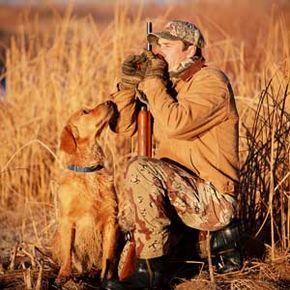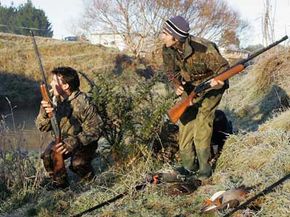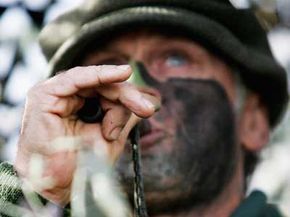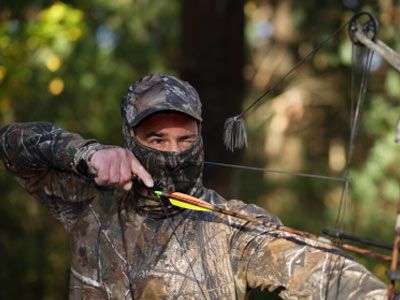Hunting involves a lot more than just going out into the woods with a shotgun or bow and arrow and returning home with an animal strapped to the hood of your car. The hunter must strategize how to attract an animal into his range. To do this, he plays to the animal's senses. He appeals to the animal's sense of sight by setting up a decoy that resembles a certain creature -- hoping prey ambles in its direction. He appeals to the animal's sense of smell by scenting his own clothing with something his prey will find attractive. And lastly, he appeals to the animal's sense of hearing by making sounds that are music to its ears. These sounds are called hunting calls.
Hunting calls are noises hunters make to attract specific animals. Some hunters make hunting calls with their own hands and mouths. Others use store-bought or homemade hunting call devices. Believe it or not, there are hundreds of techniques and calls for a hunter to learn.
Advertisement
Hunting calls are not a new-fangled, recent breakthrough in hunting. Native Americans used turkey wing bone hunting calls at least 4,000 years ago [source: NWTF]. After joining the small bones together, they would put them to their mouths and suck in air, creating a sound much like a turkey.
As you might guess, hunting calls mimic animal noises. For example, female deer make a specific sound when they're looking to mate. If a hunter mimics that sound, it will attract male deer. Different animals are attracted to different sounds, and it's important you understand which call attracts which animal. After all, calling for a turkey and accidentally attracting a bear probably won't end well for you.
Mating calls aren't the only way to attract prey, however. You can also grab their attention by saying a friendly "hey" in their language. But how?
Advertisement






